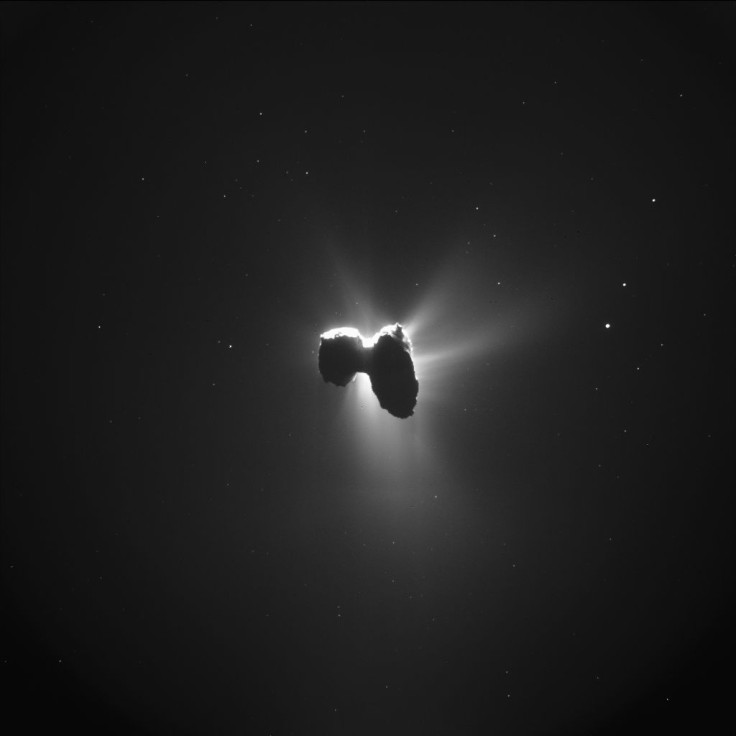ESA’s Philae: Millions Of Miles From Earth, A Comet Hitchhiker Dies A Cold And Lonely Death

Philae, the first human-made lander to set foot on a comet, has bid its final farewell. On Wednesday, the European Space Agency will switch off the Electrical Support System Processor Unit (ESS) on the Rosetta spacecraft, severing all contact with the lander that has been incommunicado for over a year now.
The ESS is the interface that is used for communications between Rosetta and the lander.
It’s time for me to say goodbye. Tomorrow, the unit on @ESA_Rosetta for communication with me will be switched off forever...
— Philae Lander (@Philae2014) July 26, 2016
“No signal has been received by Rosetta from Philae since last July and earlier this year the lander was considered to be in a state of eternal hibernation. In spite of this, the ESS was kept on until now in the unlikely chance that Philae would re-gain contact,” the ESA said in a blog post. “Although Rosetta has reached altitudes well below 10 km over the surface of Comet 67P/Churyumov-Gerasimenko, however, no signal from the lander was received since July 2015.”
Philae created history on Nov. 12, 2014, when it touched down on the surface of a comet. However, the landing did not go entirely without a hitch. It failed to deploy harpoons that would’ve anchored it to the surface, and, as a result, it bounced off toward a shaded area where it did not receive enough sunlight to power its solar panels.
It continued to operate on battery power for nearly 60 hours, beaming back invaluable science data, before entering a state of hibernation. Although it “woke up” briefly and contacted Earth through its mothership last year, it has since fallen back into a deep slumber.
In February, scientists at ESA announced that the chances of Philae re-establishing contact was “almost zero,” hinting that it may be time to say goodbye to the comet lander.
“For Philae, this means that, although ice-free, it is probably covered with dust in its shaded location on the comet and will go into permanent hibernation – no longer able to activate its systems in its cold environment,” Stephan Ulamec, Philae project manager at the German Aerospace Center, said in a statement.
Switching off the ESS is crucial to ensure that Rosetta continues to orbit the comet and carry out measurements with its scientific instruments until September, the ESA said.
“By the end of July 2016, the spacecraft will be some 520 million km from the Sun, and will start facing a significant loss of power – about 4W per day. In order to continue scientific operations over the next two months and to maximise their return, it became necessary to start reducing the power consumed by the non-essential payload components on board,” the ESA said in its blog post.
Scientists at the ESA have now encouraged fans to say goodbye to Philae through social media. People have been asked to send messages and pictures through Twitter, Instagram and Facebook using the hashtag #GoodbyePhilae.
“We know that the little robot has a place in the hearts of many – to this day, his twitter account is filled with messages of hope and concern for his well-being,” the ESA said.
© Copyright IBTimes 2024. All rights reserved.












